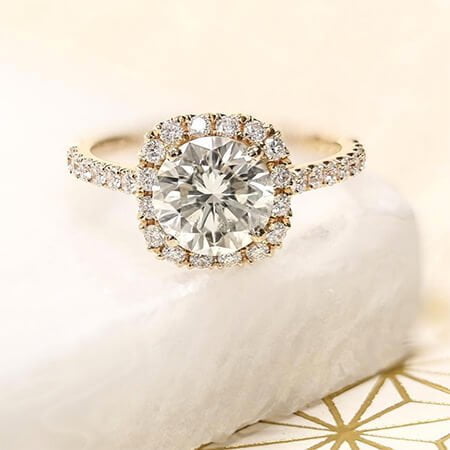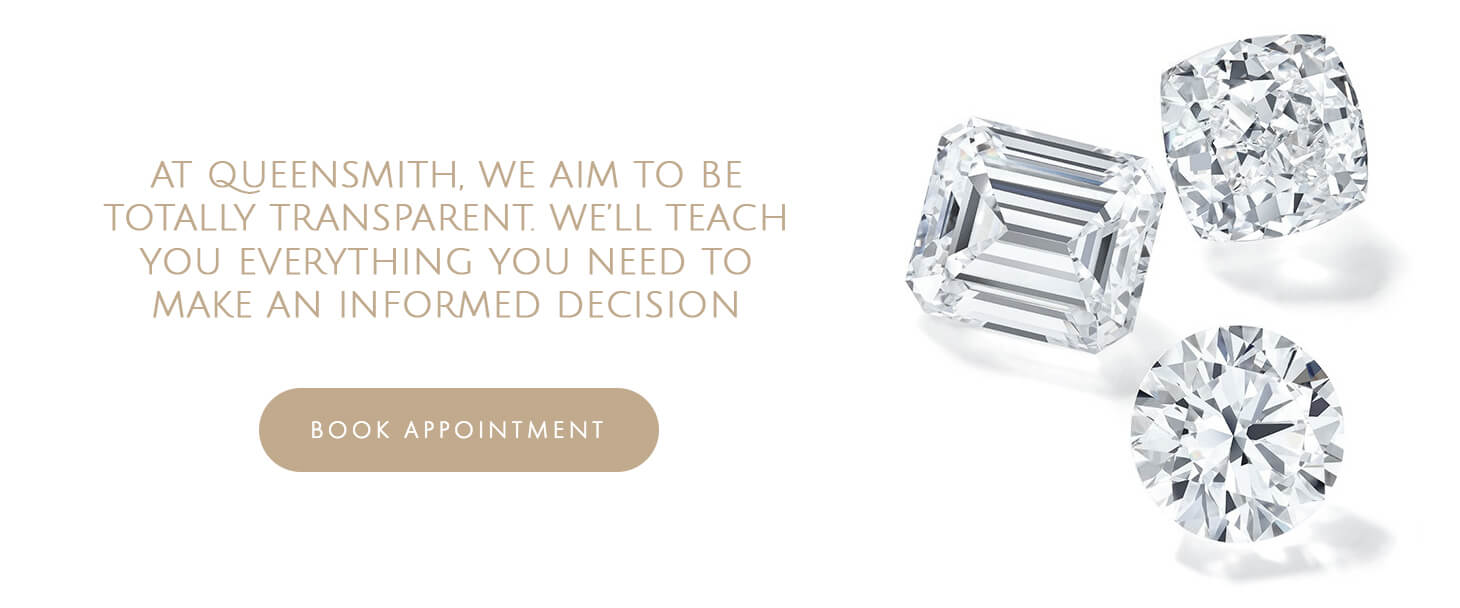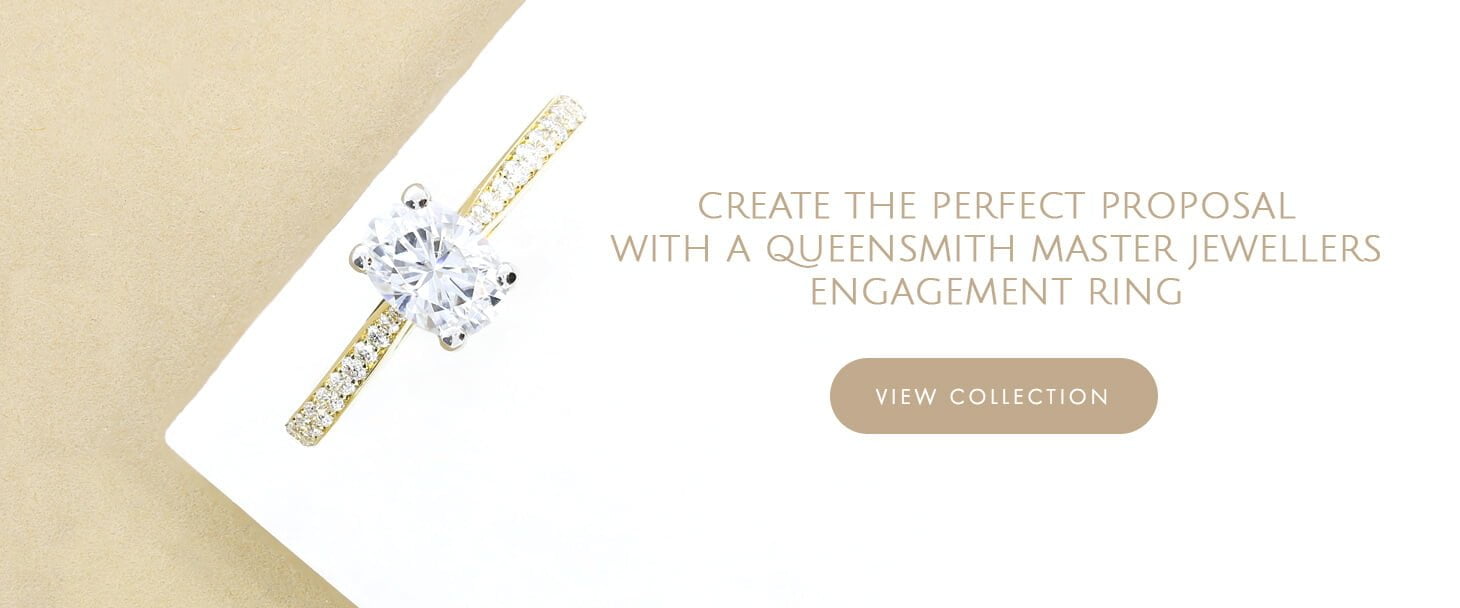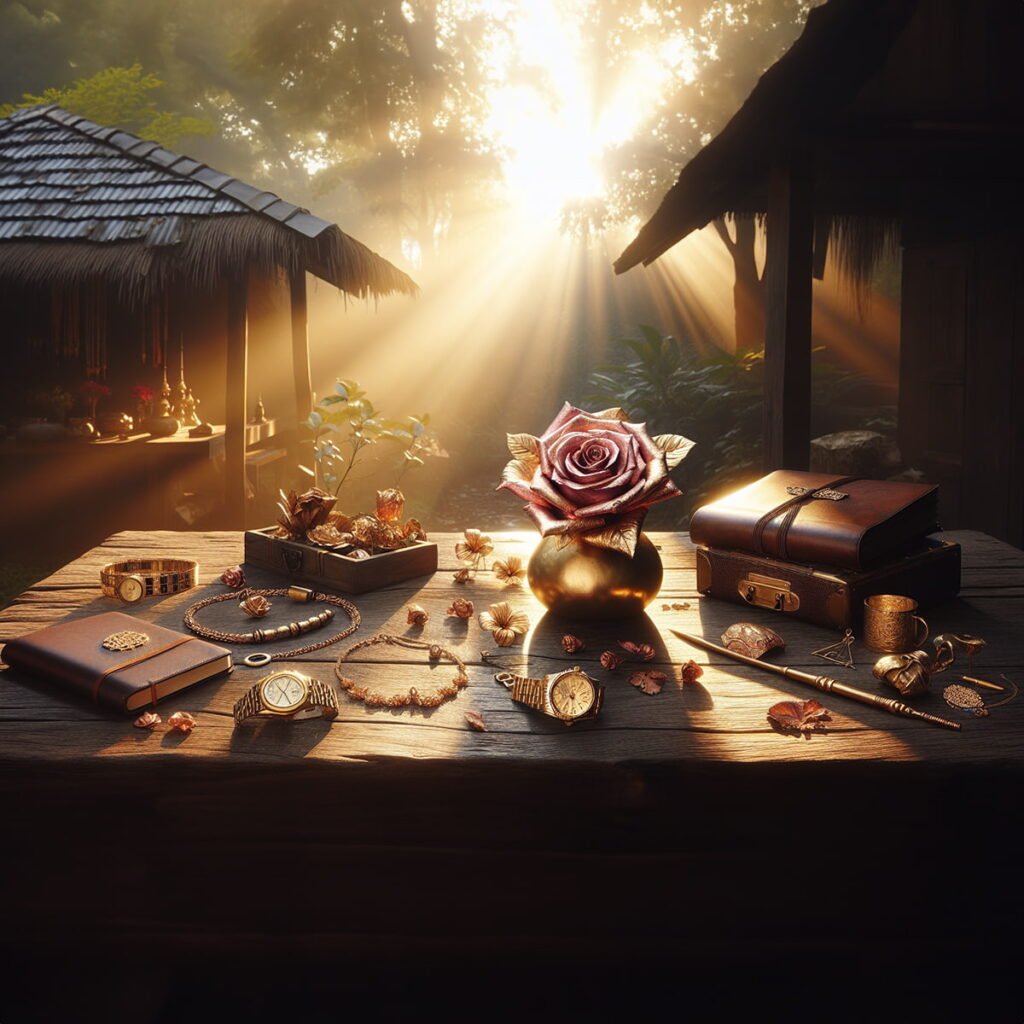
Learn how to choose the perfect diamond, our rich and detailed guide will provide you with key fundamentals to picking the right stone for you.
At Queensmith, our sales team is made up of certified gemologists, who dedicate their time to making sure you’re confident with your purchase, including the specificities of your diamond. During your consultation, we will show you a selection of GIA certified diamonds with various differences so you can reach the right decision.
The Four C’s
Diamonds are made up of a number of attributes known as the ‘Four Cs’ – cut, clarity, carat and colour. Learn more about the diamond 4C’s.
Diamond-Cut
At Queensmith, we advise you to prioritise cut as the most important aspect of the stone. An ‘excellent’ or ‘very good’ cut has been cut and polished to the highly accurate and symmetrical degrees that contribute to total internal reflection. Rainbow colours are produced via the breaking up of white light leaving the crown facets. Resulting in fantastic scintillation, i.e. sparkle. What’s the point in a diamond that doesn’t sparkle.
Diamond Colour
The colour of a diamond is graded by the natural presence of yellow, brown or grey hues. A colourless diamond makes for a more aesthetically-pleasing stone, With subtle differences between each colour grade. Most of us would prefer to compromise slightly on the colour of the stone for a better cut. As diamonds are formed in the Earth’s mantle, they pick up elemental traces such as nitrogen, which adds a yellow tint. Diamonds coloured D to F are considered ‘colourless’, whilst G to J are ‘near colourless’, the closest to D being the most valuable. Queensmith tends to stock diamonds from D to H. During our diamond consultations will take you through the processes of identifying the differences between diamonds colours.
Diamond Clarity
Clarity is determined by the minuscule inclusions, tiny cracks known as feathers or particles of material held within the diamond since its formation. A flawless diamond contains no such blemishes and is of course incredibly rare. Clarity is classified via a sliding scale, which you can learn about here. Inclusions tend to be invisible unless viewed under a microscope. Clarity is a great category to compromise on to optimise your budget. Many people actually like the idea of inclusions. Like a fingerprint, they make every diamond individual and are proof of the natural formation process that took place billions of years ago.
Carat Weight
Once you have defined the cut, colour and clarity suitable for your budget, you can start to consider carat. ‘Carat’ is a measurement of weight, so is related to the size of a stone. To put it simply, larger diamonds are rarer. Two smaller diamonds adding to the same total carat weight of one larger stone will always be less expensive. With this logic in mind, a halo or trilogy ring can be a great way to maximise sparkle without compromising on ring size.
Your jewellery budget
Budget is an important factor when choosing a diamond, which is why our gemologists work to find you the very best options to suit you. The cost of a diamond is a complex equation, and depends largely on the unique specificities of the stone, its origins.
Now you’ve had a chance to consider the many aspects that create the perfect diamond. You better start thinking about what you want your engagement ring to actually look like. Follow our guide on How to Choose an Engagement Ring, or browse our designs for a little inspiration. At Queensmith, we hand make every ring in our onsite workshop (encased in glass so you can see the process). Allowing for bespoke design and detailing. We operate in a no-pressure environment and keep you in the driving seat. We’re happy to remake any ring that isn’t totally loved by its recipient. Worry less about the design and let’s try and nail the diamond.
Book an Appointment with Queensmith






